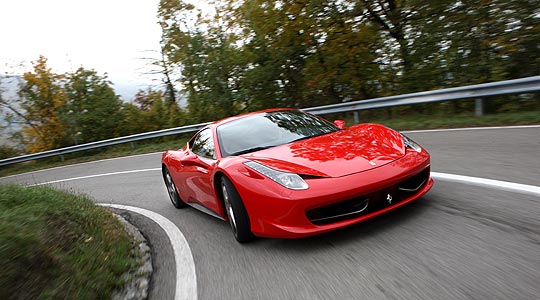
The world is falling over. “Stop!” I shout to my colleague, who is driving, because a wave of nausea is threatening to overwhelm me. This is because I’ve made the mistake of looking at the route book, just as he clocks the emptiness and straightness of the road ahead and decides to see just how quickly the new Ferrari 458 Italia can accelerate.
The rate of acceleration seems itself to be accelerating. The sensation is extraordinary, the thrust is the sort that gives you no time to get your bearings and reconfigure your internal organs. A Ferrari F430 is massively fast, of course, and a Scuderia yet more savagely so, but even they lack the ability to make the driver feel, momentarily, like a passenger and the passenger feel compressed into a black hole.
Power, of course, is partly why. The 458 has 80bhp more than an F430, a total of 570bhp if you count the extra 5bhp gained from the induction ram effect at higher speeds (the test-bench homologation figure is 565bhp). Torque, however, gives the greater clue. The peak is up from 343lb ft to 398, but the curve is quite flat with over 80 per cent of that figure available all the way from 3250rpm right up to the peak power speed, and rev limit, of 9000rpm.
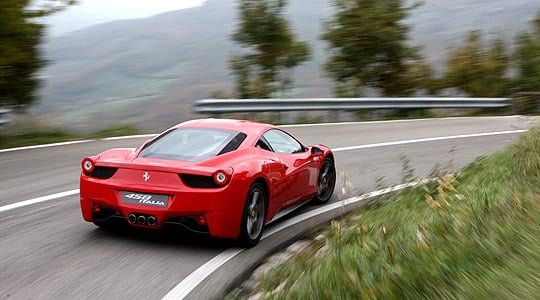
What’s more, it’s all done with great efficiency and low-for-a-Ferrari CO2 output, thanks to low internal friction, a dry-sump scavenging system which also negates pumping losses in the crankcase caused by the pistons’ movements, and – crucially – direct fuel injection which allows a 12.5 to one compression ratio. Those are the details, and there are plenty more of those, but no amount of technical analysis can quite prepare you for the sensory onslaught.
This is an engine which has the hard-edged, snorting sound of an old-school, twin-cam, Weber-fed four-pot at low speeds, before the exhaust by-passes open into the two outer pipes and the full bellow is unleashed. A 458 nearing peak revs, hurtling along the mountain roads beyond Maranello, sounds like a mid-1960s Formula 1 starting grid as the screams bounce off the rocks.

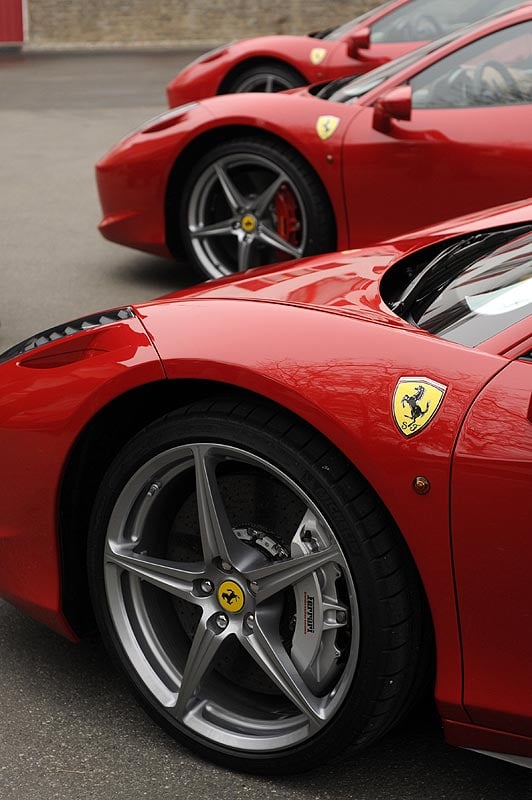
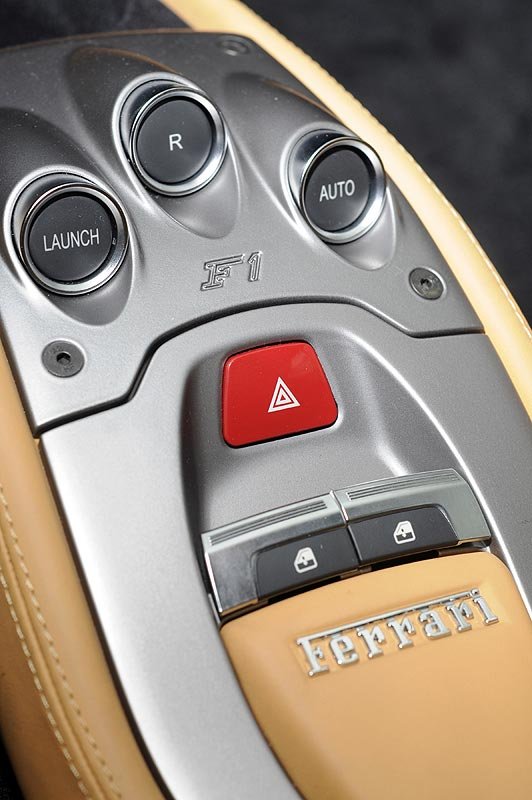
And then there’s the way it changes gear. Not a single F430 component is carried over into the 458, and that includes the seven-speed gearbox which is now a double-clutch unit derived from that of the Ferrari California. With a normal gearbox, or indeed Ferrari’s previous paddle-shift transmission which uses normal gearbox internals, there’s a pause in acceleration with each upshift. With this new one, you might expect no pause, but what you actually get is a momentary increase in acceleration from the rotational inertia of the engine as the engagement of the higher gear pulls the crankshaft speed down.

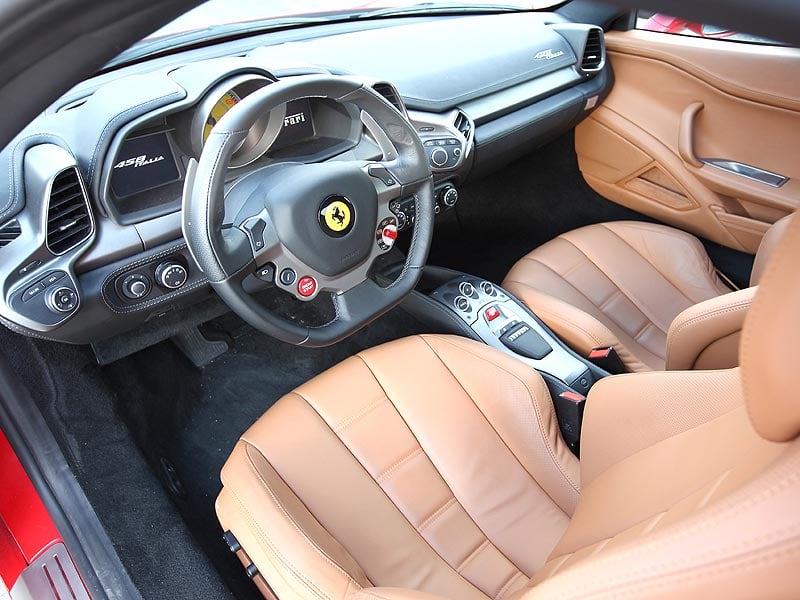
But this is not the seamless, creamy-smooth shifting of which a double-clutcher is theoretically capable. There’s more drama if the shift feels more ‘mechanical’, so the shift action has been roughed-up a bit. You need to ease the throttle to smooth the upshift; Ferrari has still left you some scope for finessing your technique. And that is good news, because a clinically perfect Ferrari would not be right at all.
Some more imperfections. You need to be gentle coming off the throttle because the deceleration is very abrupt. This doesn’t matter when you’re driving with maximum brio, but it’s annoying when travelling merely briskly. Also, the new steering wheel brings almost every hand-operated driving control within its orbit, including thumb-operated indicator buttons which end up in the wrong place when you’re trying to indicate for the next exit on a tight roundabout.
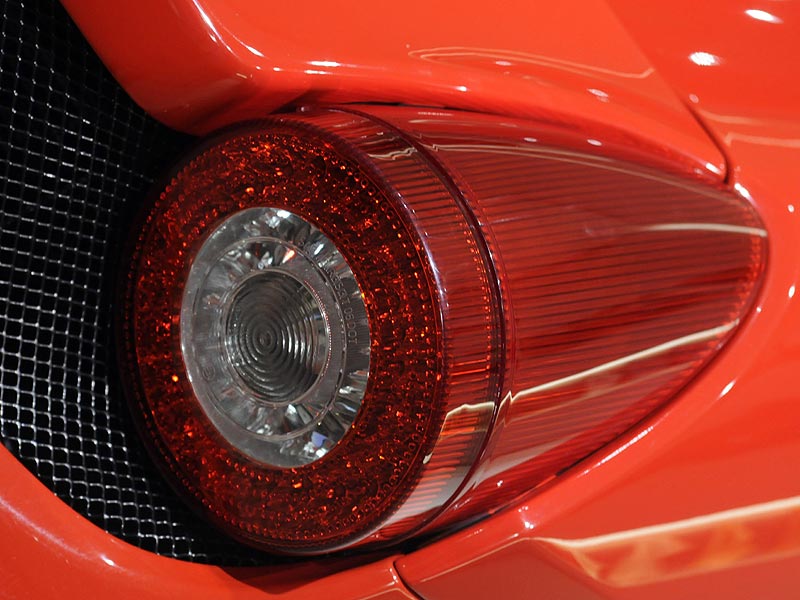
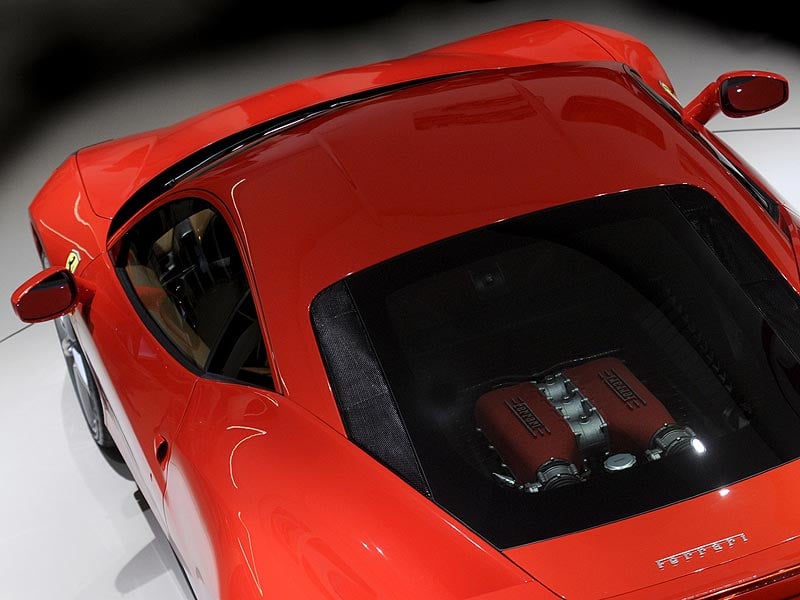
It does make for the tidiest dashboard a Ferrari has probably ever possessed, though, with symmetrical vent and switch-pods in cast aluminium flanking an instrument panel with a big, central tachometer and a TFT screen either side of it. The right-hand screen contains a photographic-look speedometer unless you select the sat-nav instead, while the left screen houses minor gauges, trip-computer readouts or the ‘vehicle dynamics assistant’, which tells you the state of the various systems that are designed to help you drive the 458 very quickly.

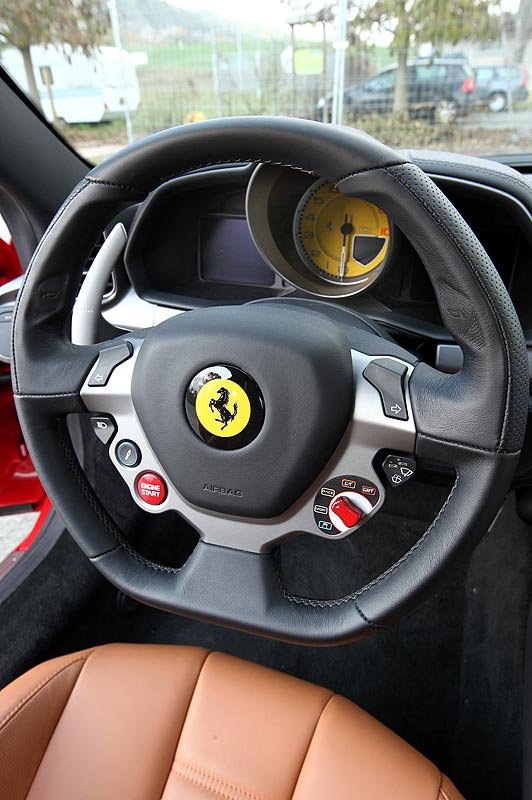

On the road, the Ferrari feels invincible. Its steering has a very quick ratio, much quicker than an F430’s, but it doesn’t feel remotely darty or twitchy because the rear suspension, now with an extra link to control toe-in, helps to keep the response measured and progressive. Instead, the 458 simply feels compact, instantly flickable, devoid of pendulous mass, and the suppleness of its ride is remarkable given how flat the Ferrari stays in fast corners. Adaptive magnetorheolgical dampers are why, as used on the 599 and, optionally, on the California. They set themselves more firmly when you switch the manettino to ‘race’ mode or above, but you can manually return them to suppleness when you want the tail-out freedom of race mode but the surface is bumpy.
The 458 looks more compact than its predecessor, too, even though it’s almost the same size and weighs slightly more; the structure and panelling are, again, of aluminium. Bigger wheels, a longer wheelbase and shorter overhangs are the reasons for the visual trickery. And there’s a pure beauty about the design, which comes from the way the aerodynamics dictate the shape. Those winglets in each front air-intake are anchored at their inner ends only, so they can deflect at speed to divert excess air away from the radiators and under the car in such a way as to increase downforce. At maximum speed (202mph), there’s around a third of a tonne of this.
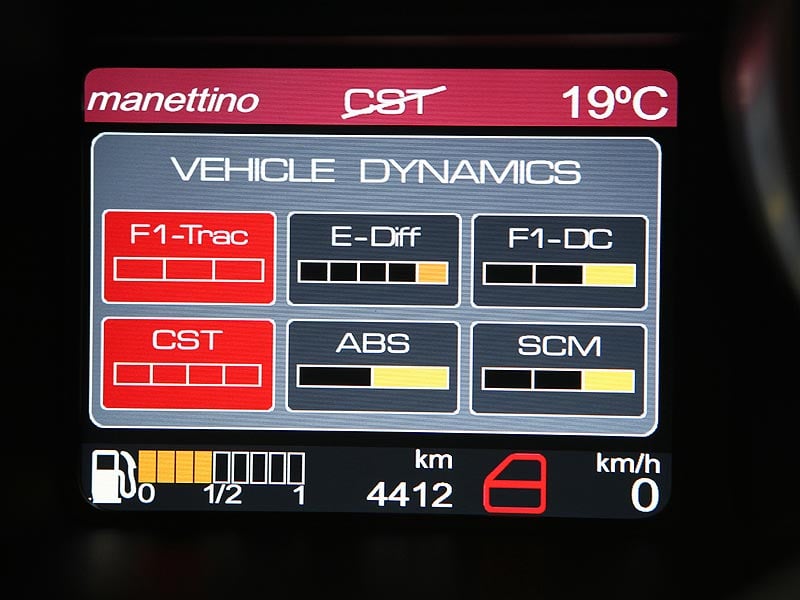
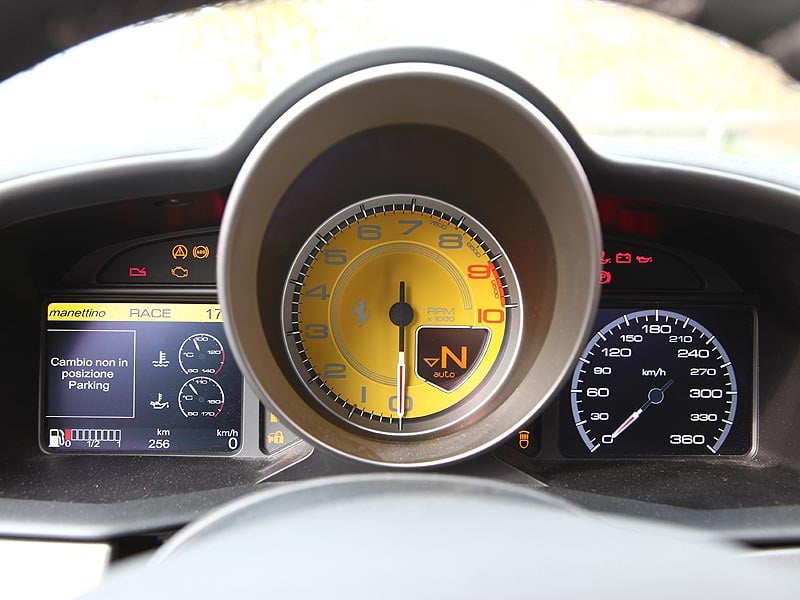
And that acceleration? The claim is under 3.4 seconds to 62mph, 10.4 seconds to twice that speed. Six very entertaining laps around Ferrari’s test track at Fiorano give ample chance to feel the ferocity, live a little at a 9000rpm shriek and revel in the 458’s easy controllability.
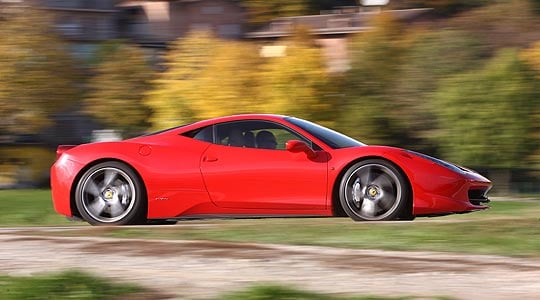
In race mode you can really lean hard on the tyres, knowing that the latest version of the E-Diff and its digital conversations with the F1-Trac system are helping you get the best out of the 458. Turn the traction control off and powerslides are yours for the asking, but still the Ferrari stays on your side because now the E-Diff is working a little harder. Turn the stability system off as well and you’re on your own.
This is a fabulous Ferrari, as fierce as a Scuderia – even though it’s the regular production car – or entirely docile when you want it to be. Pricing it at around 10 per cent more than the F430 lifts it further away from the California, but it’s much more the petrolhead machine, anyway. McLaren’s imminent MP4-12C will have a mammoth task to match this.

Text: John Simister
Photos: Ferrari
ClassicInside - The Classic Driver Newsletter
Free Subscription!
















